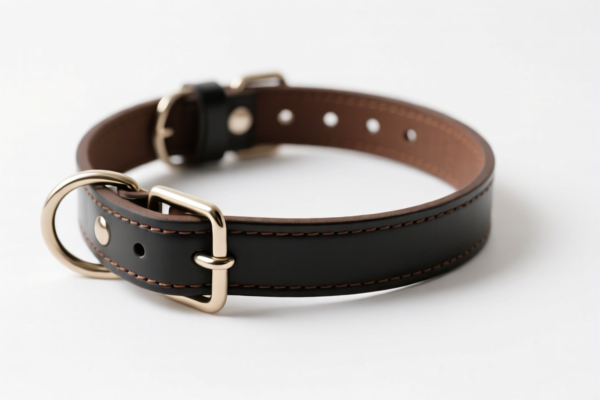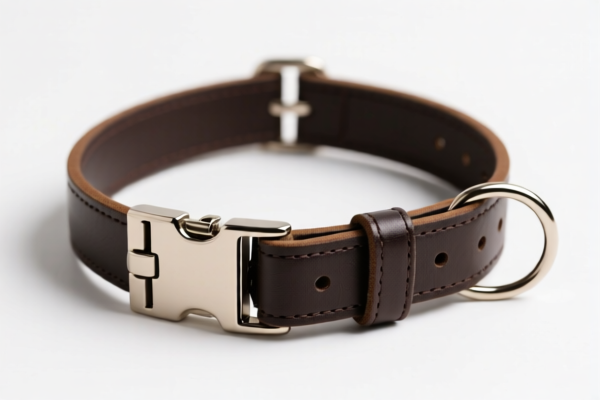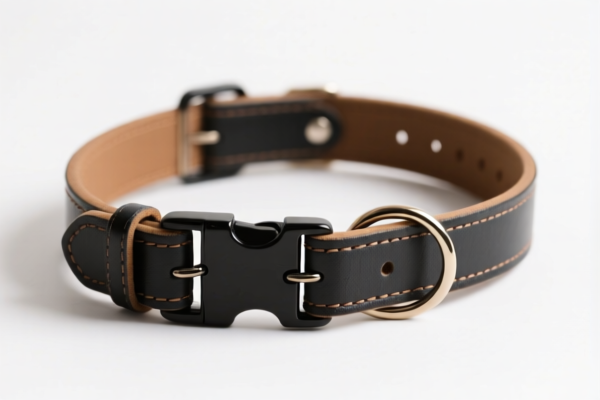Found 4 matching results
(CN → US)
| HS Code | Official Doc | Tariff Rate | Origin | Destination | Effective Date |
|---|---|---|---|---|---|
| 6111909000 | Doc | 43.1% | CN | US | 2025-05-12 |
| 4201003000 | Doc | 57.4% | CN | US | 2025-05-12 |
| 4201006000 | Doc | 57.8% | CN | US | 2025-05-12 |
| 4205008000 | Doc | 55.0% | CN | US | 2025-05-12 |




Puppy Collars
Puppy collars are specialized neckwear designed for young dogs, differing from adult dog collars in materials, adjustability, and safety features to accommodate their rapid growth and unique needs.
Materials
- Nylon: A common, durable, and affordable option. Often adjustable with plastic buckles.
- Polyester: Lightweight and soft, suitable for smaller breeds or puppies with sensitive skin.
- Leather: More durable and aesthetically pleasing, but typically more expensive. Requires more maintenance.
- Biothane: Waterproof, odor-resistant, and easy to clean. A good option for active puppies.
- Fabric: Often patterned or themed, usually for temporary use or fashion. Less durable than other options.
Purpose
- Identification: Holds identification tags with owner contact information, crucial if the puppy becomes lost.
- Leash Attachment: Enables controlled walking and training with a leash.
- Training: Used for introducing leash manners and basic obedience.
- Fashion: Can be decorative, reflecting the owner's style or the puppy's personality.
Function
Puppy collars function similarly to adult dog collars, but prioritize comfort and safety during a critical growth phase. Key functions include:
- Secure Fit: Adjustability is paramount to ensure a snug, but not constricting, fit as the puppy grows. A properly fitted collar should allow two fingers to comfortably fit between the collar and the puppy’s neck.
- Breakaway Safety: Some collars feature breakaway buckles designed to release under pressure, preventing choking hazards if the collar gets snagged on something.
- Gentle Introduction: Lightweight materials and smooth buckles minimize discomfort and encourage positive association with wearing a collar.
Usage Scenarios
- Initial Introduction: Starting with a lightweight fabric collar for short periods to acclimate the puppy.
- Supervised Walks: Using a nylon or polyester collar with a lightweight leash for short, controlled walks.
- Training Sessions: Employing a collar for basic obedience training, such as teaching "sit" or "stay".
- Daily Wear: Once the puppy is comfortable, wearing a collar with identification tags during supervised activities.
- Veterinary Visits: Essential for holding identification and potentially a temporary ID tag provided by the vet.
Common Types
- Adjustable Puppy Collars: The most common type, featuring a buckle and adjustable straps to accommodate growth.
- Breakaway Collars: Designed with a quick-release buckle for safety, ideal for puppies prone to getting tangled.
- Martingale Collars (Limited Slip Collars): Tighten when the puppy pulls, providing more control without choking. Requires proper fitting and supervision.
- Fabric Collars: Often used for fashion or temporary identification.
- Personalized Collars: Feature the owner’s contact information embroidered or printed directly onto the collar.
- Reflective Collars: Increase visibility in low-light conditions, enhancing safety during nighttime walks.
Puppy collars fall under the category of saddlery and harness for any animal, specifically equipment for dogs. Here are the relevant HS codes based on the provided information:
- 4201003000: This HS code covers saddlery and harness for any animal, including traces, leads, knee pads, muzzles, saddle cloths, saddle bags, dog coats and the like. Specifically, it details dog leashes, collars, muzzles, harnesses and similar dog equipment. This is a direct match for puppy collars. The first two digits (42) indicate articles of leather or of composition leather; the next two (01) specify saddlery and harness for any animal; and the final two (30) further define this as dog leashes, collars, muzzles, harnesses and similar dog equipment. The current tax rate is a base tariff of 2.4% plus a 25.0% additional tariff, totaling 57.4%. This additional tariff will increase to 30% after April 2, 2025.
- 4201006000: This HS code also covers saddlery and harness for any animal. However, it is categorized as Other within this broader category. The first two digits (42) indicate articles of leather or of composition leather; the next two (01) specify saddlery and harness for any animal; and the final two (60) further define this as other saddlery and harness equipment. The current tax rate is a base tariff of 2.8% plus a 25.0% additional tariff, totaling 57.8%. This additional tariff will increase to 30% after April 2, 2025.
According to the provided reference material, the HS code options related to 'puppy collars' are limited, with only the following 2 found.
Customer Reviews
No reviews yet.